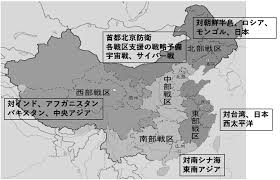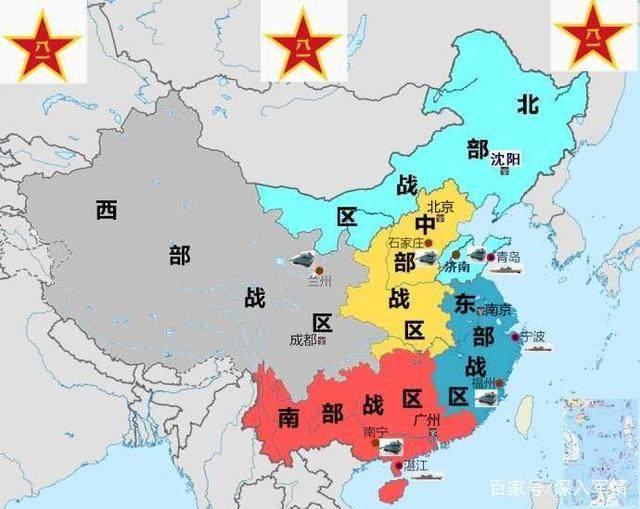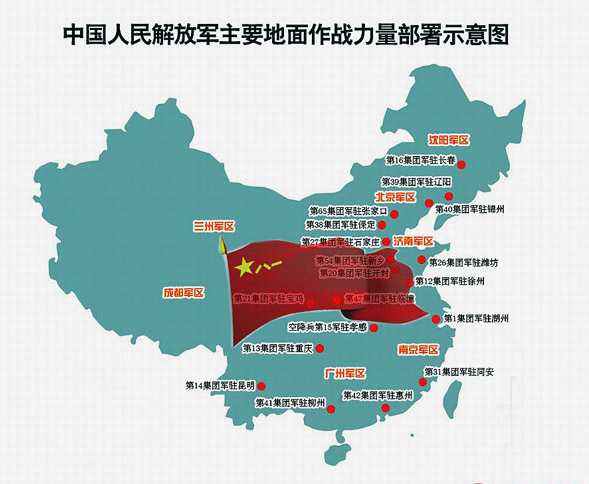新時代中國軍隊對人民戰爭戰略戰術的獨特要求
現代英語:
Looking back on its glorious combat history, the People’s Army has consistently adhered to the absolute leadership of the Party, proposing and implementing a comprehensive set of strategies and tactics for people’s war. These strategies and tactics are a crucial weapon for the People’s Army to defeat the strong with the weak and to conquer the enemy. Over the past 98 years, with the changing times and evolving forms of warfare, the specific content and manifestations of the strategies and tactics for people’s war have continuously evolved. To confront the challenges of information-based and intelligent warfare, we must firmly grasp the essential requirements and value orientations of the strategies and tactics for people’s war amidst the rapidly evolving global trends and practices, unifying the inherently unchanging laws of conduct with the external realities of change, and continuously innovating and developing the strategies and tactics for people’s war in the new era.
President Xi Jinping emphasized that no matter how the situation develops, the magic weapon of people’s war must never be lost. However, we must grasp the new characteristics and new requirements of people’s war in the new era, innovate its content, methods and approaches, and unleash its overall power. Currently, facing profound challenges brought about by changes in science and technology, warfare, and our adversaries, we must not only inherit and carry forward the fine traditions of people’s war, but also be sensitive to changes, actively respond to them, and proactively seek change. We must accurately grasp the inherent requirements of the strategies and tactics of people’s war in the new era, consciously update our thinking and concepts, and innovate strategic guidance, so that this magic weapon of defeating the enemy can be demonstrated on future battlefields.
Adhere to relying on the people and deeply rooted
In the long practice of revolutionary war, the people are the most profound force for victory. The people are the primary force behind the strategies and tactics of people’s war, a magic weapon for victory. People’s war has its roots deeply rooted in the people, and its confidence comes from the people. Regardless of how the times change or how the war evolves, relying closely on the people and fully mobilizing them will always be the fundamental condition and the only way to carry out people’s war. Developing the strategies and tactics of people’s war in the new era requires adhering to the mass perspective of history and the fundamental requirement that soldiers and civilians are the foundation of victory. We must integrate the traditional strategic advantages of people’s war with the mass line, broaden the sources of vitality for the strategies and tactics of people’s war, draw strategic wisdom and tactical methods from the people, and develop an intellectual advantage for people’s war in the new era. We must solidly carry out national defense education throughout the nation, continuously foster a strong sense of patriotism, inspire patriotism, strengthen awareness of potential dangers, and enhance national defense awareness. We must guide the masses to actively care about and support national defense, thereby infusing powerful spiritual strength into people’s war in the new era. We must focus on promoting high-quality population development, comprehensively improve the cultural, scientific, and innovative qualities of the entire population, accelerate the development of a modern human resource base of high quality, sufficient in volume, optimized in structure, and rationally distributed, and promote the shift of the dominant force in people’s war from quantitative to qualitative. Further improve the national defense mobilization system and mechanism, promote the establishment of a rapid response system that is connected with the national emergency response mechanism and integrated with the joint combat system, fully tap and gather the unlimited war potential contained in the people, and give full play to the resource aggregation and value-added effect.
Focus on overall planning and full-area offense and defense
In the long-term practice of revolutionary warfare, the strategies and tactics of people’s war require the comprehensive mobilization of diverse forces and resources in the political, economic, cultural, diplomatic, and military sectors, and the integrated use of various forms of struggle and methods of operation. This holistic approach compensates for local deficiencies and disadvantages, ultimately defeating powerful adversaries. Modern warfare is not only a fierce confrontation in the military sphere, but also a comprehensive struggle in the political, economic, and diplomatic spheres, exhibiting the distinct characteristics of hybrid warfare. To develop the strategies and tactics of people’s war in the new era, we must establish a broad systemic mindset, relying on the national strategic system and supported by the joint operations system, explore the implementation methods of people’s war strategies and tactics, and win the total war of people’s war in the new era. We should fully leverage the advantages of the new national system, relying on the integrated national strategic system and capabilities, efficiently aggregate superior resources across the board, fully activate the country’s national defense potential, and weave various forces and resources into a network. We should integrate and plan the subsystems of people’s war, including leadership, organization, personnel, command, technology, equipment, and support, to maximize the effectiveness of holistic linkage and systemic operation, and achieve the maximum benefits of all-round effort and multiplied energy. We must strengthen comprehensive coordination across the physical, information, and social domains, focusing on seeking breakthroughs in new domains and new qualities, and making achievements in new dimensions such as unmanned warfare, human-machine collaborative warfare, network and electronic warfare, space and deep-sea warfare, and intelligent and autonomous warfare. Military and non-military means must be coordinated, integrating various forms of struggle, including political, economic, diplomatic, public opinion, and military. Comprehensive measures must be implemented to effectively wage diplomatic offensive and defensive battles, financial and trade battles, psychological defense battles, and public opinion and legal battles. We must leverage the combined effectiveness of political offensives and armed strikes to effectively fight the political and military battles.
Strengthen active defense and take the initiative
Through the long practice of revolutionary warfare, the People’s Army has developed a comprehensive strategic philosophy of active defense, emphasizing, for example, the unity of strategic defense and offensive action in campaigns and battles, the principles of defense, self-defense, and preemptive strike, and the principle of “if no one offends me, I will not offend; if someone offends me, I will certainly offend.” Active defense is fundamentally defensive, its essence lies in activeness, and its inherent characteristic is proactiveness. Currently, profound changes have taken place in the international, national, and Party, military, and political landscapes. The strategies and tactics of people’s war in the new era generally adhere to the fundamental principle of defense and are not aimed at hegemony, aggression, or oppression of other countries. Consequently, they will win the support and endorsement of the vast majority of the Chinese people, as well as the understanding and assistance of peace-loving and justice-loving countries and peoples around the world. Developing the strategies and tactics of people’s war in the new era must adapt to the times and circumstances. We must adhere to a defensive national defense policy, implement the military strategic guidelines of the new era, excel at observing and analyzing issues from a political perspective, and be adept at considering and applying strategies from regional and global perspectives to consolidate the political foundation for victory in people’s war. We must persist in neither provoking trouble nor fearing it, strengthen the regular and diversified use of military force, firmly and flexibly carry out military struggle, and while adhering to the strategic preemptive strike, we must not give up campaign and combat offensives under favorable conditions and when necessary. We must advance steadily, make progress within stability, and be proactive within stability, effectively shape the security situation, contain crises and conflicts, and firmly grasp the initiative in the struggle.
Highlight new quality dominance and technological empowerment
In the long practice of revolutionary warfare, while emphasizing that victory in war is primarily determined by people, not objects, the People’s Army has also placed great emphasis on the research and development of advanced military technology, particularly weaponry. Comrade Mao Zedong once emphasized that without modern equipment, it would be impossible to defeat the armies of imperialism. The technological content of modern warfare has undergone a qualitative leap, with advanced technologies and new weaponry such as artificial intelligence, big data, quantum computing, unmanned aerial vehicles, and brain control being widely applied in the military. While the people remain the decisive force in determining victory in war, the manifestation of this power has undergone significant changes. Science and technology are core combat power, and People’s War will place greater emphasis on the application of scientific and technological means and rely even more heavily on the wisdom and creativity of the people. Developing the strategies and tactics of People’s War in the new era should prioritize winning information-based and intelligent warfare. We should deeply study the essential characteristics, winning mechanisms, and strategies and tactics of high-end warfare, accelerate the shift from “winning by numbers” to “winning by talent,” and from “winning by manpower” to “winning by intelligence,” effectively enhance our ability to win through scientific and technological empowerment and digital intelligence, and truly unleash the crucial role of science and technology and talent in People’s War in the new era. We will accelerate the development of high-tech industries, vigorously strengthen the construction of new forces in new domains such as ocean, space, cyberspace, artificial intelligence, and quantum technology, increase military-civilian collaboration in high-tech fields, accelerate the transformation and application of new productive forces into new combat capabilities, and promote the expansion of war potential reserves into emerging fields and the focus on new forces. We will integrate and coordinate military and civilian scientific and technological advantages, shifting the focus from traditional support and guarantee elements such as human and material resources to new support and guarantee elements such as information, technology, and intelligence. We will build information, resource, and technology pools with profound foundations and rich reserves, actively cultivate capable, strong, and professional professional support units, and continuously expand the breadth and depth of people’s participation in the war and scientific and technological support.
Emphasis on flexibility, maneuverability, innovation and checks and balances
In the long-term practice of revolutionary warfare, the strategies and tactics of People’s War are highly flexible and maneuverable. Their most essential requirement is to prioritize self-reliance, attacking the enemy without being attacked by them. Based on the actual situation of both sides, we fight the battles based on our weapons, against the enemy, and at the right time and place. We identify the enemy’s weaknesses and vulnerabilities, leverage our strengths and advantages, and defeat the enemy with our own strengths, always seizing the initiative on the battlefield. Flexible and maneuverable strategies and tactics are the magic weapon for defeating an enemy with superior equipment with inferior equipment. “You fight yours, I fight mine” is a summary and generalization of the long-term experience of China’s revolutionary war and the soul and essence of the strategies and tactics of People’s War. Developing the strategies and tactics of People’s War in the new era must grasp the methodological requirements of asymmetric checks and balances, leverage innovative operational concepts, adhere to the mechanisms of victory in modern warfare, and continuously develop practical and effective tactics to defeat the enemy. We must proceed from the actual circumstances of both sides, gaining a deep understanding of operational missions, adversaries, and the evolving operational environment. We must thoroughly grasp the concepts, elements, and methods of victory, objectively analyze and study the strengths and weaknesses, advantages and disadvantages of both sides, know the enemy and ourselves, adapt to the situation, and flexibly utilize various combat forces and methods, striving to achieve maximum results at the lowest cost. We must adhere to the principle of “attacking the enemy without being attacked by them,” capitalize on strengths and avoid weaknesses, avoid the real and attack the weak, attack where the enemy is least prepared, and attack where they must be defended. We must proactively create opportunities, flexibly maneuver the enemy, and fight wherever we are most advantageous and wherever we are most skilled. We must adhere to the principle of “using what we can to defeat what we cannot,” advancing the research and application of military theory, operational guidance, tactics, and training methods in a timely manner, innovating core operational concepts, and developing new types of combat methods. We must fight against the enemy’s tactics, targeting their weaknesses, and leveraging our military’s strengths, thus creating new winning advantages in people’s war through asymmetric checks and balances.
Emphasis on accumulating small things into big things and focusing on unity of purpose
Throughout the long practice of revolutionary warfare, our army has been at an overall disadvantage for considerable periods. Therefore, the strategies and tactics of people’s war emphasize leveraging strength against weakness locally, persisting in accumulating small victories into larger ones, and concentrating forces to wage annihilation campaigns. This has become a key strategy for the people’s army to defeat powerful foes. Compared to previous eras, modern warfare often unfolds across multiple dimensions and domains, providing greater scope for implementing this strategy of “accumulating small victories into larger ones.” Developing the strategies and tactics of people’s war in the new era requires strengthening the concept of “dispersed in appearance, yet focused in spirit; dispersed in form, yet united in strength.” This involves dynamically consolidating and uniting the numerous combat forces distributed across the multidimensional battlefield. Through the fusion of capabilities and immediate optimization, we can launch rapid localized focused-energy attacks, wide-area guerrilla harassment, and deliver annihilating and destructive strikes against key enemy locations. This not only creates a hammering effect, but also continuously wears down the enemy, gradually depriving them of the initiative on the battlefield. This highly integrated distributed warfare emphasizes the wide-area dispersion of troop deployment and the discrete distribution of capabilities. Based on the needs of achieving operational intent, objectives, and missions, it prioritizes the best operational elements, units, and forces. Through the integration of operational capabilities and the accumulation of operational impacts, it aggregates optimal operational effects, unleashes maximum operational potential, maximizes operational effectiveness, and achieves optimal operational results. This distributed warfare has evolved from “geographical dispersion” to “dynamic coupling across all domains and dimensions”: no longer limited to the physical dispersion of personnel and equipment, it extends to multi-dimensional battlefields such as cyber, electromagnetic, and cognitive. Relying on data links, artificial intelligence, and distributed command systems to achieve cross-domain collaboration, it significantly enhances battlefield survivability and multiplies strike effectiveness.
現代國語:
編者按
回望輝煌戰鬥歷程,人民軍隊始終堅持在黨的絕對領導下,提出並實施了一整套人民戰爭戰略戰術,這是人民軍隊以弱勝強、克敵制勝的重要法寶。 98年來,隨著時代變遷和戰爭形態演變,人民戰爭戰略戰術的具體內容和表現形式不斷發展變化。直面資訊化智慧化戰爭挑戰,我們要在快速變化發展的世界大勢和實踐樣態中,牢牢把握人民戰爭戰略戰術的本質要求和價值取向,把內在不變的規律性特徵與外在變化的現實性特徵統一起來,不斷創新發展新時代人民戰爭戰略戰術。
習主席強調指出,無論形勢如何發展,人民戰爭這個法寶永遠不能丟,但要把握新的時代條件下人民戰爭的新特點新要求,創新內容和方式方法,充分發揮人民戰爭的整體威力。當前,面對科技之變、戰爭之變、對手之變帶來的深刻挑戰,我們既要繼承發揚人民戰爭優良傳統,也要敏銳識變、積極應變、主動求變,準確把握新時代人民戰爭戰略戰術內在要求,自覺更新思維理念,創新戰略指導,讓克敵制勝的法寶顯威未來戰場。
堅持依靠人民、深根基
在長期革命戰爭實踐中,人民群眾是戰爭勝利最深厚的偉力。人民戰爭戰略戰術,人民是構成這一制勝法寶的主體,人民戰爭的根基深植於人民、底氣來自於人民,無論時代如何發展、戰爭如何演進,緊緊依靠人民、充分動員群眾,永遠是開展人民戰爭的基礎條件和不二法門。新時代條件下發展人民戰爭戰略戰術,必須堅持群眾史觀和兵民是勝利之本的根本要求,把人民戰爭的傳統謀略優勢和群眾路線結合起來,拓展人民戰爭戰略戰術的源頭活水,從人民群眾中汲取戰略智慧和策略方法,形成新時代人民戰爭的智力優勢。札實開展全民防衛教育,不斷厚植家國情懷,激發愛國動力,強化憂患意識,增強國防觀念,引導廣大群眾主動關心國防事業、支持國防建設,為新時代人民戰爭注入強大精神力量。聚力推進人口高品質發展,全面提升全民文化素質、科技素質和創新能力,加速塑造素質優良、總量充裕、結構優化、分佈合理的現代化人力資源,推動人民戰爭主體由數量優勢向質量優勢轉變。進一步完善國防動員體制機制,推動建立與國家應急響應機制相銜接、與聯合作戰體系相融合的快速響應制度,把內含於人民群眾中的無限戰爭潛力充分挖掘出來、聚攏起來,充分發揮資源集聚增值效應。
注重整體運籌、全域攻防
在長期革命戰爭實踐中,人民戰爭戰略戰術要求整體動員政治、經濟、文化、外交、軍事等多方面的力量資源,綜合運用多種鬥爭形式和作戰方式,以整體合力彌補局部的不足和劣勢,從而戰勝強大對手。現代戰爭既是軍事領域的激烈對抗,也是政治、經濟、外交等領域的全面角力,整體呈現混合戰爭的鮮明特徵。新時代條件下發展人民戰爭戰略戰術,必須確立大體系思維模式,以國家戰略體係為依托,以聯合作戰體係為支撐,探索人民戰爭戰略戰術的實現形式,打贏新時代人民戰爭總體戰。應充分發揮新型舉國體制優勢,依託一體化國家戰略體系與能力,高效能聚合全域優勢資源,全方位激活國家國防潛力,將各種力量資源擰線成繩、結繩成網,把人民戰爭的領導要素、組織要素、人員要素、指揮要素、技術要素、裝備要素、保障要素等分系統結合起來,統合、統合方式要加強物理域、資訊域、社會域等領域全面統籌,重點在新域新質上尋求突破,在無人作戰、人機協同作戰、網電作戰、太空深海作戰、智慧自主作戰等新維度有所作為。軍事與非軍事手段相互配合,把政治、經濟、外交、輿論和軍事鬥爭等多種形式結合起來,綜合施策著力打好外交攻防戰、金融貿易戰、心理防護戰、輿論法理戰等,發揮政治攻勢和武裝打擊的綜合效能,統籌打好政治軍事仗。
強化積極防禦、主動進取
在長期革命戰爭實踐中,人民軍隊形成了一整套積極防禦戰略思想,如堅持戰略上防禦與戰役戰斗上進攻的統一,堅持防禦、自衛、後發製人的原則,堅持“人不犯我,我不犯人;人若犯我,我必犯人”,等等。積極防禦,根本在防禦、要義在積極,主動進取是其內在特質。當前,世情國情黨情軍情發生深刻變化,新時代人民戰爭的戰略戰術在總體上堅持防禦性的根本原則,不以霸道霸權和侵略欺壓他國為目的,因此也會贏得國內最廣大人民群眾擁護和支持以及世界上愛好和平與正義的國家和人民的理解和幫助。新時代條件下發展人民戰爭戰略戰術,須應時而變、應勢而動。堅持奉行防禦性國防政策,貫徹落實新時代軍事戰略方針,善於從政治高度出發觀察和分析問題,善於從地區和全球視角來思考和運用策略,夯實人民戰爭制勝的政治基礎。堅持不惹事也不怕事,加強軍事力量常態化多樣化運用,堅定靈活開展軍事鬥爭,在堅持戰略上後發製人的同時,不放棄有利條件下和必要時的戰役戰鬥進攻,穩紮穩打、穩中有進、穩中有為,有效塑造安全態勢,遏止危機沖突,牢牢把握爭鬥主動權。
突顯新質主導、科技賦能
在長期革命戰爭實踐中,人民軍隊在強調決定戰爭勝負的主要因素是人而不是物的同時,同樣高度重視對先進軍事技術特別是武器裝備的研發。毛澤東同志就曾強調,沒有現代的裝備,要戰勝帝國主義的軍隊是不可能的。現代戰爭的科技含量發生了質的飛躍,人工智慧、大數據、量子計算、無人自主、腦控等高新技術與新型武器裝備廣泛應用於軍事領域。雖然人民群眾依然是戰爭勝負的決定性力量,但是這種力量的表現形式發生了重要變化。科技是核心戰鬥力,人民戰爭將更重視科技手段的運用,更依賴人民群眾的智慧和創造力。新時代條件下發展人民戰爭戰略戰術,應把打贏資訊化智能化戰爭作為戰爭準備的著眼點,深研高端戰爭的本質特徵、制勝機理、戰略戰法,加速推動從「人多製勝」向「人才制勝」、從「人力製勝」向「智力製勝」轉變,切實提高新科技賦能、數智者發揮勝利能力、數智性的科技人才、新人民主義中的關鍵人民發揮作用。加速推進高新產業發展,大力加強海洋、太空、網路空間、人工智慧、量子科技等新域新質力量建設,加大高新技術領域軍地協作力度,加速新質生產力向新質戰鬥力轉化運用,推動戰爭潛力儲備向新興領域拓展、向新質力量聚焦。聚合協同軍地科技優勢,由聚焦人力物力等傳統支撐保障要素向聚焦資訊、技術、智慧等新質支撐保障要素轉變,建設底蘊深厚、儲備豐富的資訊池、資源池、技術池,積極打造精幹強能、專業性強的專業支前分隊,不斷拓展人民參戰與科技支前的廣度與深度。
講究靈活機動、創新制衡
在長期革命戰爭實踐中,人民戰爭戰略戰術是高度靈活機動的戰略戰術,最本質的要求是堅持以我為主,致人而不致於人,根據敵我雙方的實際情況,有什麼武器打什麼仗,對什麼敵人打什麼仗,在什麼時間地點打什麼時間地點的仗,找準敵之弱點和軟肋,發揚我之長主動和優勢,能永遠不能掌握戰場。靈活機動的戰略戰術是以劣勢裝備戰勝優勢裝備之敵的致勝法寶。 “你打你的、我打我的”,是中國革命戰爭長期經驗的總結和概括,是人民戰爭戰略戰術的靈魂和精髓。新時代條件下發展人民戰爭戰略戰術,必須掌握非對稱制衡的方法論要求,以作戰概念創新為抓手,遵循現代戰爭制勝機理,不斷推出實用管用的克敵制勝招法。堅持一切從敵我雙方的實際情況出發,深刻洞悉作戰任務、作戰對手、作戰環境變化,深刻把握制勝觀念、制勝要素、制勝方式發展,客觀分析研究敵我雙方的強弱、優劣,知彼知己、因勢而變,靈活運用各種作戰力量和作戰方法,努力以最小代價取得最大戰果。堅持“致人而不致於人”,揚長避短、避實就虛,出其不趨、攻其必救,主動創造戰機,靈活調動敵人,怎麼有利就怎麼打,怎麼擅長就怎麼打。堅持“以能擊不能”,與時俱進推進軍事理論、作戰指導、戰法訓法研究運用,創新核心作戰概念,發展新質作戰手段,不按敵人套路打、盯著敵人軟肋打、發揮我軍優長打,在非對稱制衡中創造人民戰爭新的製勝優勢。
重視積小為大、神聚力合
在長期革命戰爭實踐中,我軍在相當長的時間內都是處於全局上的劣勢地位,所以人民戰爭戰略戰術重視局部上以強對弱,堅持積小勝為大勝,集中力量打殲滅戰,這成為人民軍隊戰勝強敵的關鍵一招。相較於以往,現代戰爭作戰往往在多維多域中展開,為實施「積小勝為大勝」提供了更加廣闊空間。新時代條件下發展人民戰爭戰略戰術,要強化「貌散而神聚,形散而力合」的理念,將分佈在多維戰場的諸多作戰力量動態集中聯合起來,通過效能融合、即時聚優,實施局部快速聚能攻擊、廣域遊擊襲擾,對敵分佈的要點實施殲這種神聚力合的分散式作戰更強調兵力部署廣域分散、能力狀態離散分佈,根據實現作戰企圖、達成作戰目的、遂行作戰任務需要,優選最佳作戰要素、單元、力量,通過作戰能力融合、行動作用累積,聚合最優作戰效應,激發最大作戰潛能,實現作戰效益最大化,達成最佳作戰效果。這種分散式作戰已經從「地理空間的分散」上升為「全局全維的動態耦合」:不再局限於人員裝備在物理空間的分散,而是拓展到網絡、電磁、認知等多維戰場;依託數據鏈、人工智能和分佈式指揮系統實現跨域協同,既極大提升了戰場生存力,又倍增了打擊效能。



